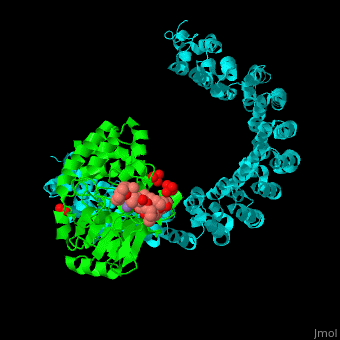Function
Protein phosphatases (PP) or serine/threonine protein phosphatase regulate protein phosphorylation and thus are key in intracellular signal transduction processes.
- PP1 is a serine/threonine phosphatase and is a key component of the insulin signaling pathway[1].
- PP1C is the catalytic subunit of PP1.
- PP1K is Mn+2/Mg+2-dependent PP1.
- PP2A targets proteins in the oncogenic signaling pathways[2]. For PP2A see also HEAT Repeat.
- PP2C are Mg/Mn-dependent and are essential for the regulation of cell cycle and stress signaling pathways. For details see
-
- Protein Phosphatase 2C
- ABA-regulated Protein Phosphatase 2C
- ABA Signaling Pathway.
- PP4 regulates a variety of cellular functions[3].
- PP5 is activated by lipids and is involved in signal transduction[4].
Disease
Mutations in PP2A are found in many solid cancers and leukemias. PP2A-activating drugs are possible candidates for cancer therapeutics protocols[5]. Development of Alzheimer disease drugs could be based on restoration of PP2A activity[6].
Structural highlights
. Algal toxin binds at the surface pocket of the PP2A catalytic subunit which contains the Mn+2 ion cofactors[7]. Water molecule are shown as red sphere.
3D Structures of protein phosphatase
Protein phosphatase 3D structures

